Ram Mandir at Ayodhya holds significant reverence and tranquility for many Hindu devotees.
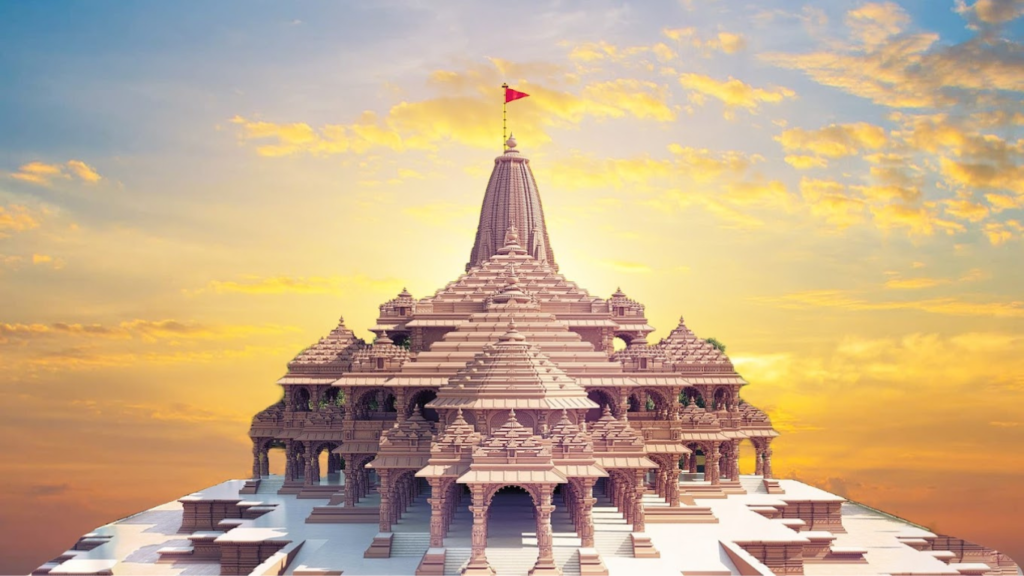
Namaste!
Welcome to the world of resolute readings at www.onindianpath.com. Today, we are going to talk about the temple dedicated to Shree Ram and has been a disputed land for many years in the world’s biggest democracy.
Introduction
Apparently, Shri Ram mandir, Ayodhya is a place where lakhs of devotees come in to pay homage to Lord Ram and find spiritual solace. However, my recent visit to this sacred place at Ayodhya, Uttar Pradesh, India made my life more inclined towards Shri Rama and his teachings. Apart form Shri Ram temple at Janambhoomi, Ayodhya, I also had an opportunity to walk through the lanes of Ayodhya to explore Hanuman Garhi temple, Kanak Mahal, Dasharatha Mahal, Shri Bharat Gufa and Guptawar Ghat at River Saryu. Certainly, I willl be covering all of them in details in my upcoming blogs.
Coming to the main temple, the consecration ceremony of Ram Lalla on January 22, 2024 has beautified the area to a splendid level. Additionally, I was fortunate enough to explore the craftsmanship of this temple at ground floor. Still, the other two floors are under construction. Also, the temple is under the supervision of Shri Ram Janambhoomi Teerth Kshetra Trust.
Do you know the cost of building this divine temple? The cost of construction of Shri Ram temple is estimated at Rs.1800 cr.
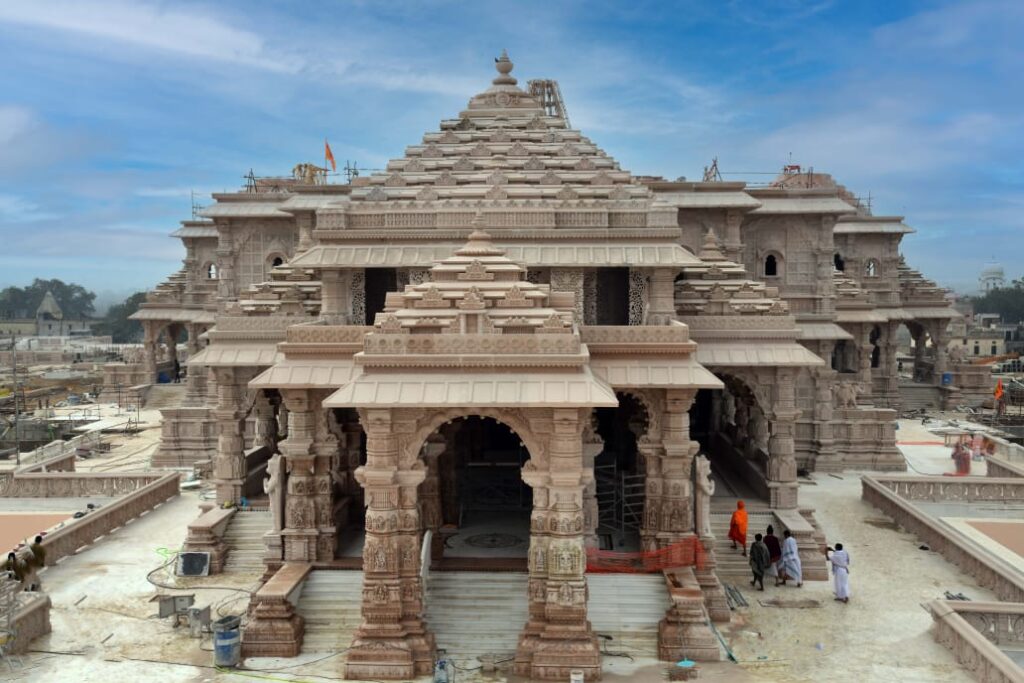
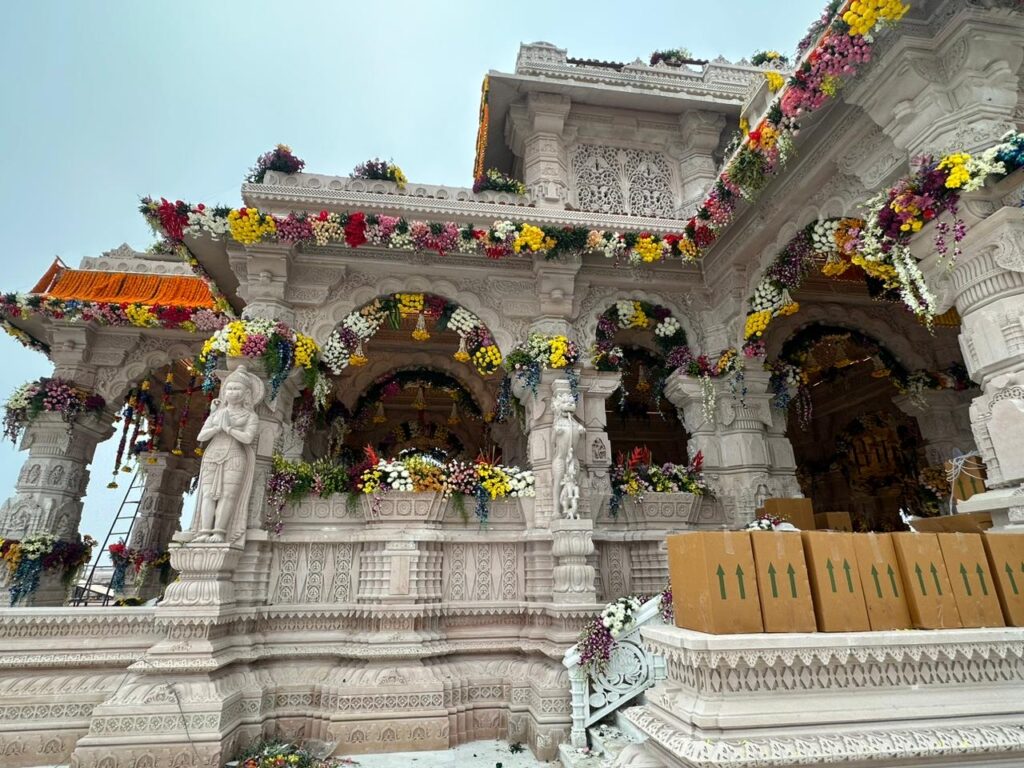
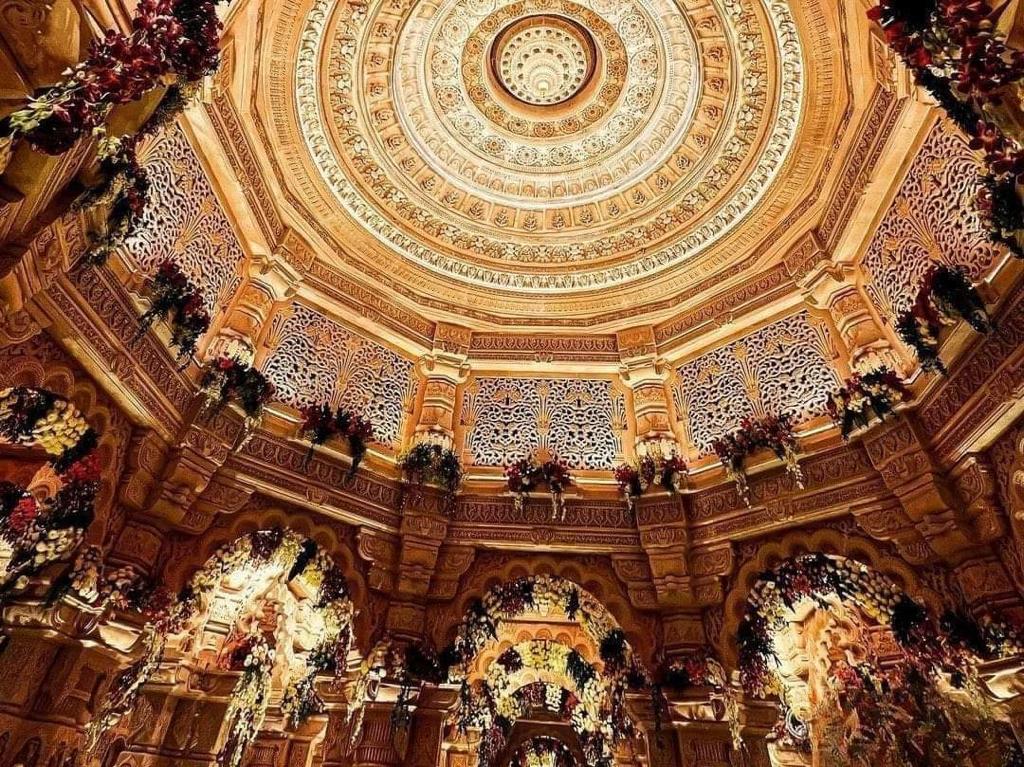
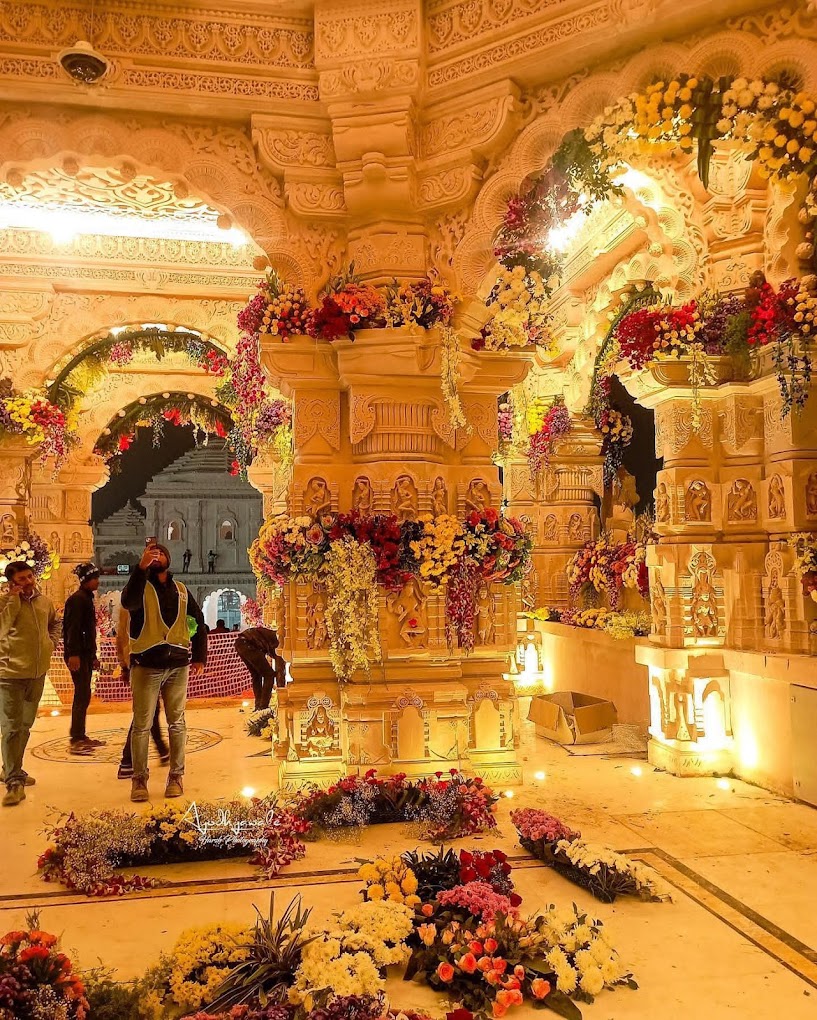
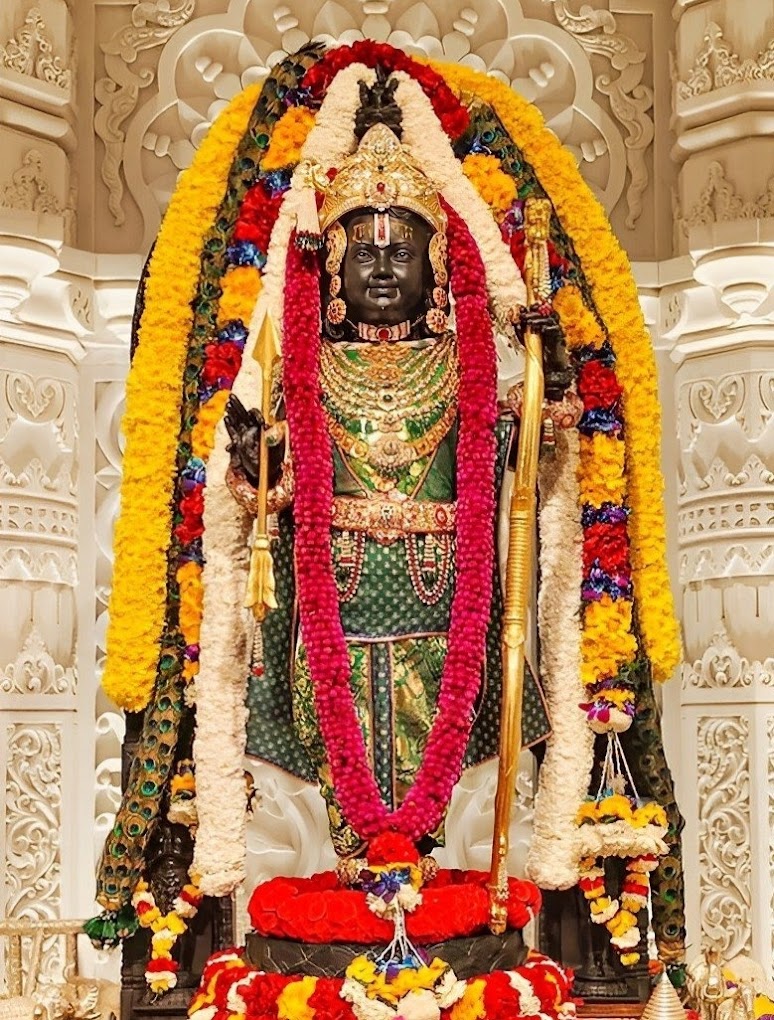
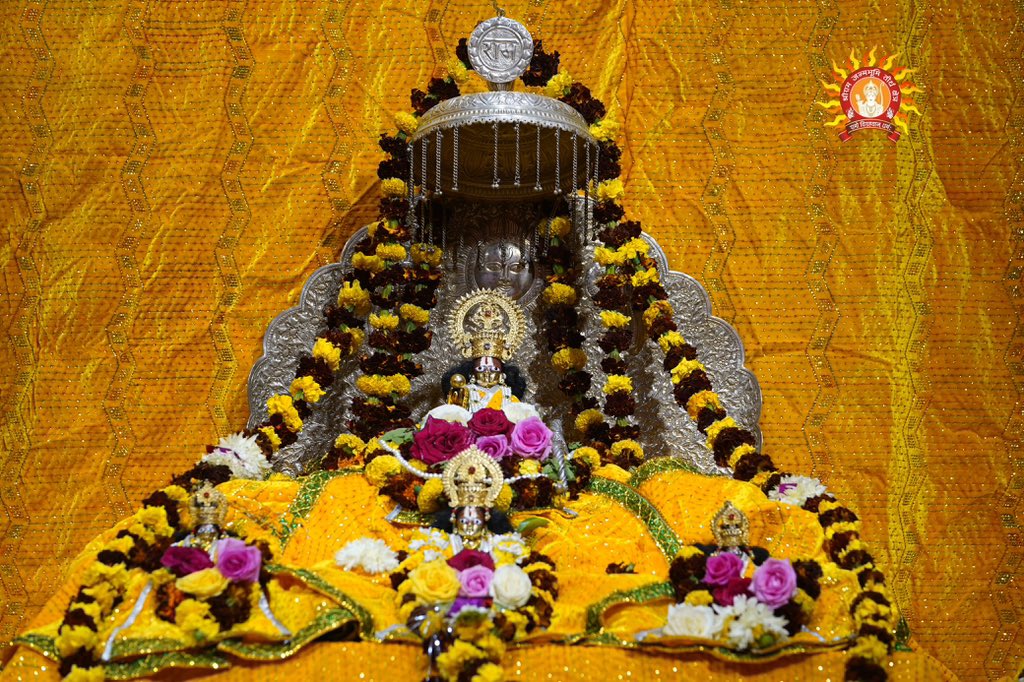
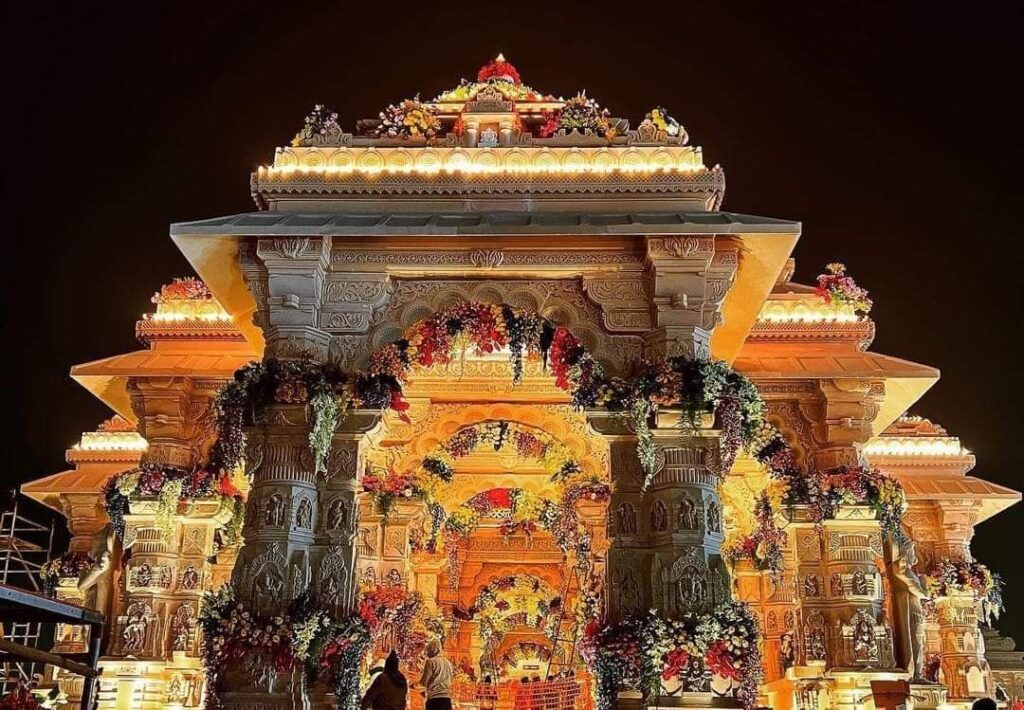
Significance of Shri Ram Temple, Ayodhya
Ayodhya is considered one of the sacred cities in Hindu religion, among the seven Puris. Shri Ram temple is a serene evidence of unfolding legends of Ramayana. This temple is profoundly significant for all the Hindus as it stands on the birthland of their beloved god, Shri Ram. While exploring Ayodhya, the echoes of Ram Naam filled my ears. Every nook, corner, and street of Ayodhya is enchanted with the Ram Tarak Mantra (Jai Ram Jai Ram Jai Jai Ram). Apparently, the shops, streetlights and even the trees at the roadside are beautifully adorned with Ram Naam.
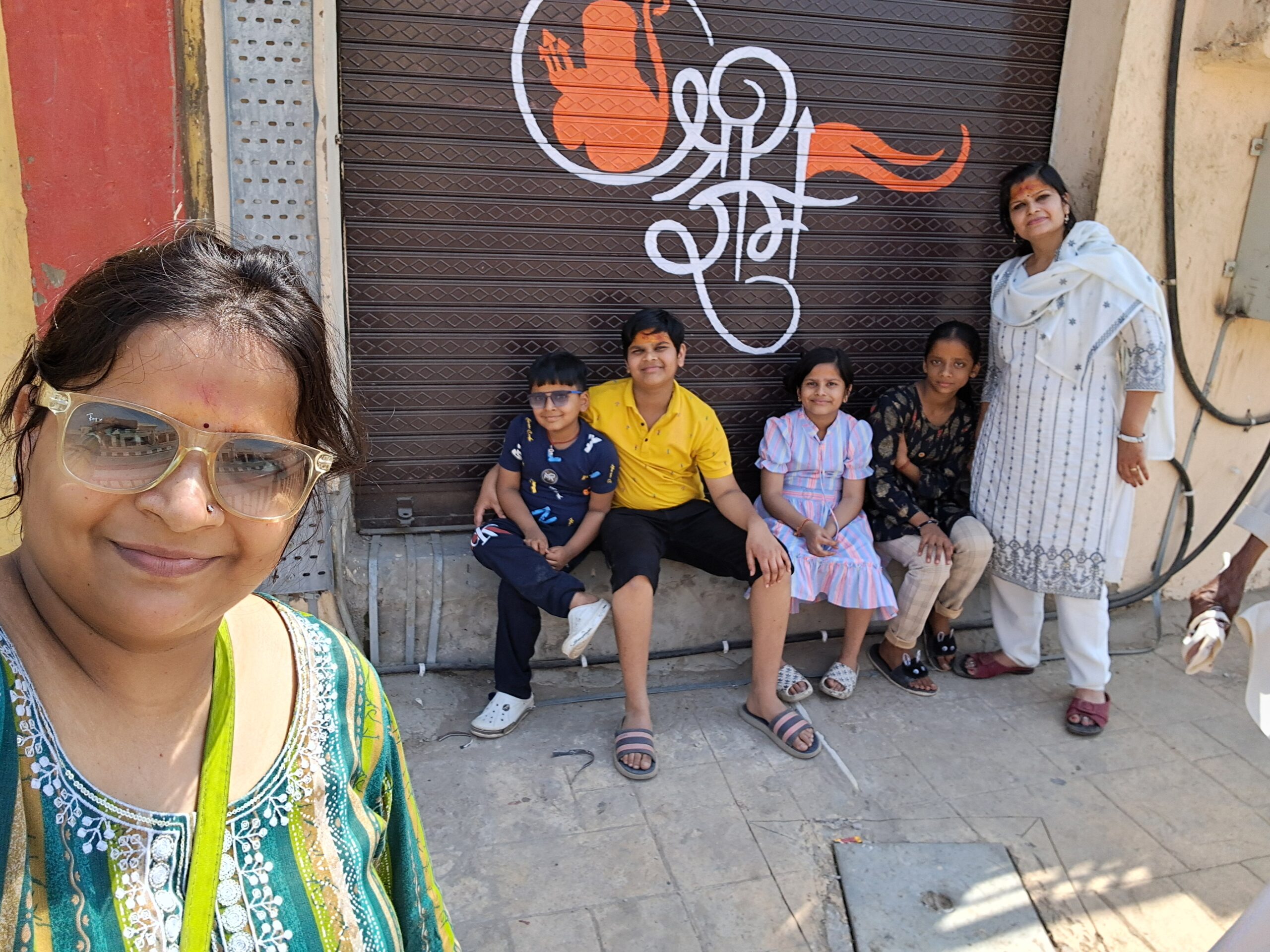
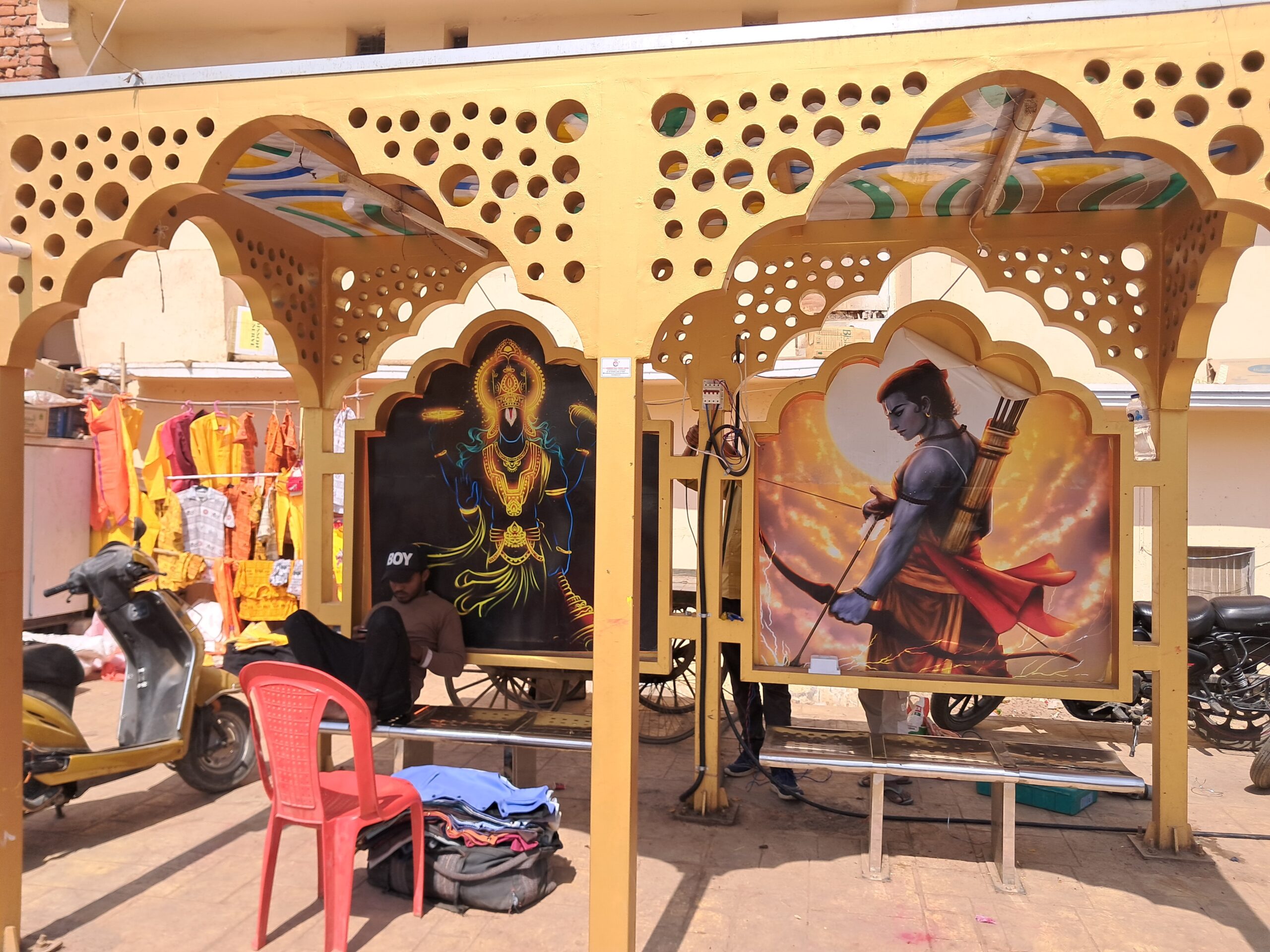
Each morning, the resounding chants of Jai Shri Ram spellbound the atmosphere, creating a majestic ambiance. The temple’s history and the recent construction have been a reservoir of rich cultural and religious moments for many followers of Lord Ram.
History of Ram Mandir, Ayodhya
Built on disputed land Bababri Masjid was built in 1528 and 1529. Idols of Ram and Sita were placed in mosque in 1949, It was attacked by Kar Sewaks in 1992.
before the rule of Muslims, it was holy place for three main religious sites as
- Janamsthana aka Janam Bhoomi of Shri Ram.
- Swargdwara aka Swarg Dawar temple means doors to heavens.
- Yajnasthana aka Treta k Thakur temple.
Idol of Shri Rama
Subsequently, the present idol of Ram Lalla ( child form of Shri Ram) is made from a 60 million old Shaligram rock. Mainly, these Shaligram are found in from Gandaki river at Nepal. Additionally Arun Yogiraj from Karnataka made this splendid and seraphic idol of 51 inch tall with 200 kgs weight.
Moreover, now the temple owns two types of idols of Ram Lalla:

a) Mulavirat murti (the main idol of Ram Lalla placed after Pran Prathistha at the Garbh Griha of temple).

b) Utsav murti (old idol installed in 1949, now would be taken out for festivals and processions for festival).
Architecture of Shri Ram Temple
Furthermore, Indian temples have two kind of style in architecture :
a) NAGRA STYLE
b) DRAVIDIAN STYLE
The Shri Ram temple in Ayodhya shines brilliantly at the center of the city, designed in the Nagara style of architecture. This splendid man-made marvel boasts 360 pillars and 44 doors, showcasing a true amalgamation of Shilpa Shastra and Vastu Shastra principles. Remarkably, it is the world’s third-largest Hindu temple, standing magnificently with a length of 380 feet, a width of 250 feet, and a height of 161 feet, covering 2.7 acers in three floors. Surprisingly, this masterpiece is built without iron and cement.
Key Highlights of Shri Ram Temple Construction
- Firstly, the Ground floor of temple has Shri Ram idol with beautiful carved walls and ceilings.
- Secondly, the temple is verdant by Pink sandstone from Rajasthan.
- Nonetheless, time capsules are buried under ground below 2000 feet. This capule is made up of copper plate inscribed with details of Lord Rama, Ayodhya.
- In addition to, temple also encompasses 5 halls namely ; Nrityaa Mandap, Rang Mandap, Prathna mandap, Sabha Mandap and Kirtan Mandap.
- Lastly, as per the plan the constructed temple premises will have the capacity of 25000 devotees with pilgrims facility center, museum, cultural and educational centers.
Timings of Shri Ram Temple
Darshana Timings: 6:30 AM to 9:30PM
Mangla aarti : 4 :00 AM
Shringar aarti : 6 :15 AM
Shayan aarti : 10 PM
Special Gifts
As we know, on 22 January 2024, Pran Prathistha (consecration) ceremony took place at Ayodhya. In this prime event, Ram Lalla received various exuberant and amazing gifts from the devotees all over the country.
a) Firstly, temple received a hugely built bell. Infect, the main bell is made up of Asthdhatu (gold, silver, copper, tin, zinc, lead, iron, and mercury) weights around 2100 kg. And it can produce the sound up to 15kms.
b) Secondly, the temple received a108 foot long incense stick from Surat.
c) Another devotee from Nagpur made 7000 kg of Ram Halwa to be distributed as prasad.
d) Likewise, a dealer form Aligarh sent 400 kg weighing lock and key for the temple.
e) Subsequently temple did revived a giant lamp weghimg 1100 kg for Diya and bati.
f) Also, it received a 56 inch tall and wide drum made of gold foil.
g) A gold plated footwear was gifted from Hyderabad.
h) Lastly temple received necklace of 5000 diamond with 2 kg silver as a birth gift.
How to Reach
Although, I am sure after reading this blog, you must be packing your bag packs to come to Ayodhya to witness the verdant presence of Ram Lalla here.
Ayodhya is an evidence of exuberant celebration of being Rama there. He was born, played and ruled the the empire with truth and virtue. Ramraj is the most desired and perfect example of kingdom.
One can choose any of the following ways to commute:
- By Air: Mahirishi Valmiki International Airport Ayodhya is the nearest airport connected to Ayodhya Dham(10kms away). Seekers can also opt for other airports at Lucknow ,Gorakhpur, Prayagraj and Varanasi. From then on, one can take Buses and Cab service to reach destination.
- By Train: Ayodhya Dham Junction Railway Station is majorly connected to all the major railway stations of the country by many train routres. However, by Rail route, Ayodhya is 128 kms away from Lucknow, 171 kms away from Gorakhpur, 157 kms away from Prayagraj and 196 kms away from Varanasi.
- By Road: Ayodhya Dham is well connected to Lucknow expressway Highway to major cities. Apparently, this holy city is roughly 130 kilometres away from Lucknow, 200 kilometres away from Varanasi, 160 kilometres away from Prayagraj, 140 kilometres from Gorakhpur, and 636 kilometres from Delhi. Indeed, there are regular buses from Delhi, Gorakhpur, and Lucknow to Ayodhya dham. One can also take pre and post paid taxis to enjoy his trip.
Conclusion
At the end, I would like to recommend my readers to must visit the sacred grounds of Ayodhya Dham. One should witness the timeless legacy of Lord Rama and the resplendent Ram Mandir. Here, we are reminded of the enduring power of faith, unity, and resilience. Additionally, it is a spiritual reservoir where the past meets the present, bridging hearts across generations and beliefs. Ayodhya is a blend of richness of our cultural heritage and also the universal truths of love, righteousness and the quest for inner harmony.
Wish you a happy time ahead. Keep growing with us.









5 thoughts on “Ram Mandir, Ayodhya: An Eternal Beacon of Faith and Harmony”